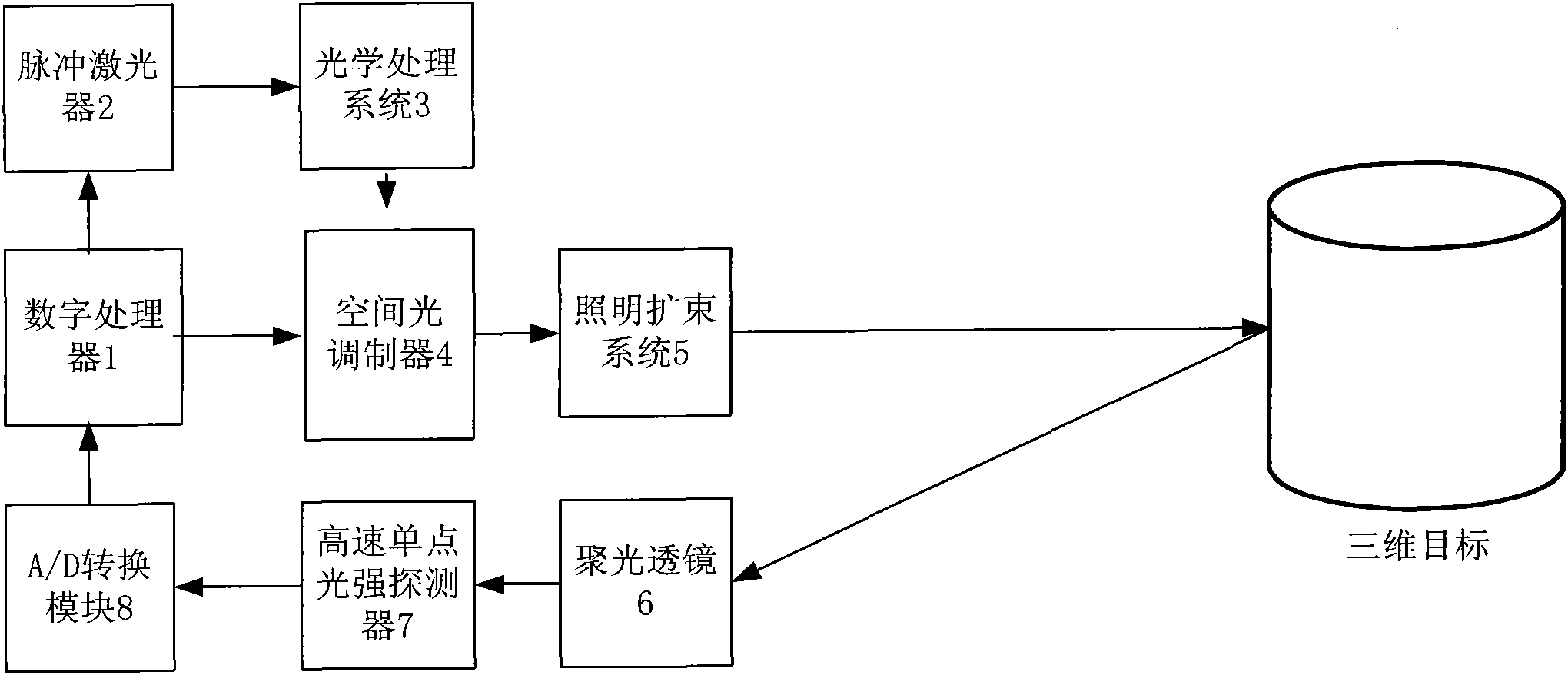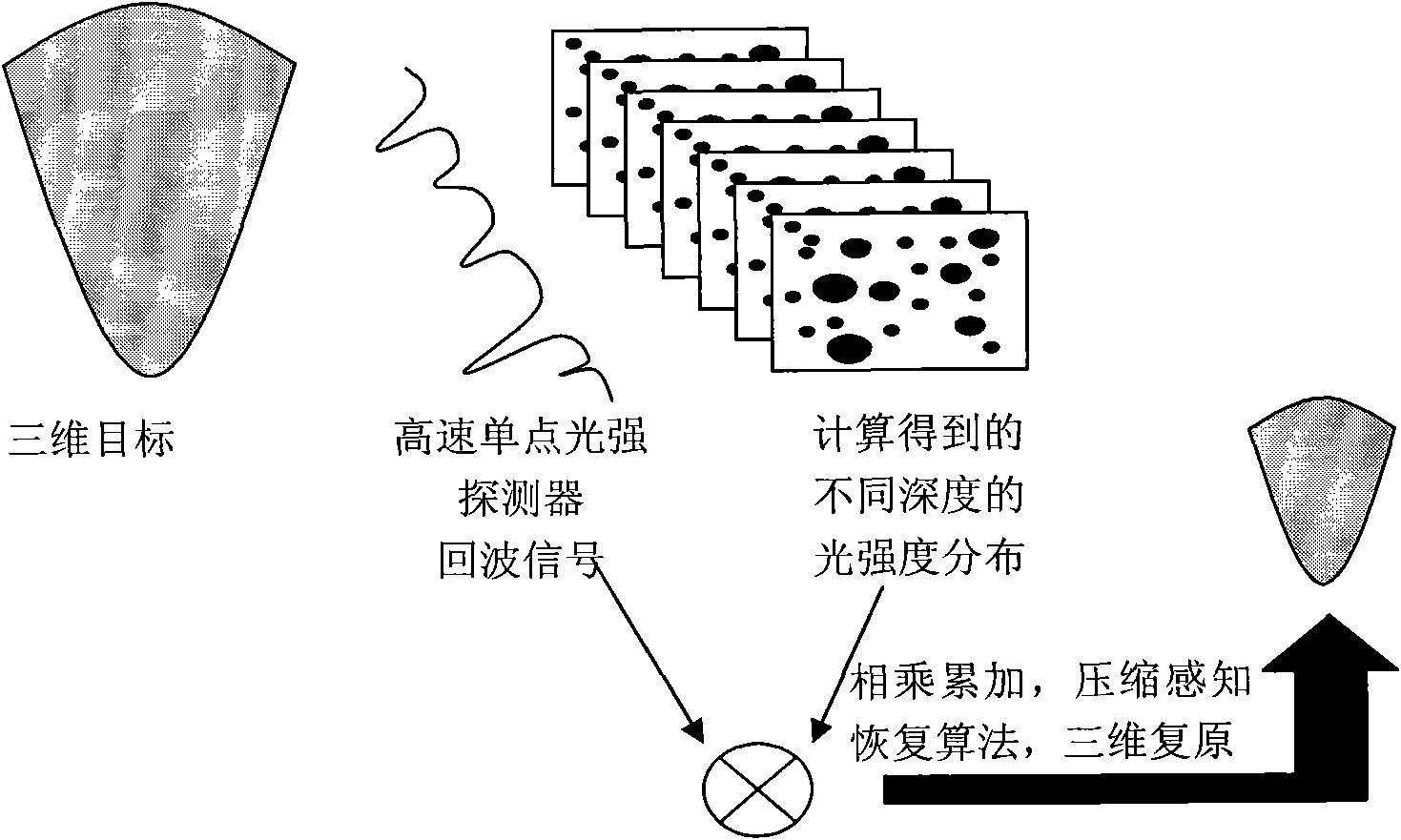Three-dimensional imaging method based on single detector correlated imaging theory
A correlative imaging and three-dimensional imaging technology, which is applied in the direction of instruments, measuring devices, and electromagnetic wave re-radiation, can solve the problems of inability to achieve real-time detection and long detection time, eliminate the influence of background light, simplify the experimental device, and improve contrast and the effect of the signal-to-noise ratio
- Summary
- Abstract
- Description
- Claims
- Application Information
AI Technical Summary
Problems solved by technology
Method used
Image
Examples
specific Embodiment
[0028] 1. The digital processor 1 controls the pulsed laser 2 to generate pulsed light, the frequency of which is adjustable between 1 and 100KHZ, and the minimum pulse width can reach 10ns. The pulsed light is processed by the optical processing system 3 to make the pulsed light space mode It is known that the pulsed light of the known spatial mode passes through the spatial light modulator 4, and a certain pseudo-random phase is added, assuming that the pulsed light field after the i-th detection of the additional pseudo-random phase is E i (x, y, t).
[0029] 2. The light field of the above-mentioned pulsed light irradiated on the object after Fresnel diffraction at a distance of L is:
[0030] E 1 i ( x 1 , y 1 , t ) = K 0 ...
PUM
 Login to View More
Login to View More Abstract
Description
Claims
Application Information
 Login to View More
Login to View More - R&D
- Intellectual Property
- Life Sciences
- Materials
- Tech Scout
- Unparalleled Data Quality
- Higher Quality Content
- 60% Fewer Hallucinations
Browse by: Latest US Patents, China's latest patents, Technical Efficacy Thesaurus, Application Domain, Technology Topic, Popular Technical Reports.
© 2025 PatSnap. All rights reserved.Legal|Privacy policy|Modern Slavery Act Transparency Statement|Sitemap|About US| Contact US: help@patsnap.com



